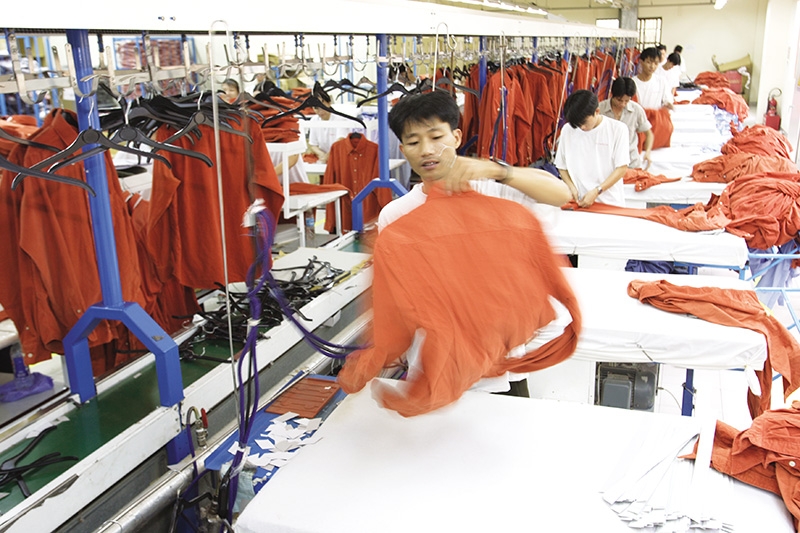Providing compliance for origin of exports
 |
| Significant changes to products are not always easy to determine |
Exporting to the US is now more difficult if the process involves more than one country of origin, which is common primarily with manufactured or assembled goods. Sophisticated manufactured or assembled goods often have components or materials from a number of nations that are brought together to make a product for export. Typically, only agricultural commodities exported in large volumes originate to 100 per cent of a single country.
 |
| Nestor Scherbey, president of Customs, Trade & Risk Management Services (CTRMS) Vietnam |
In the US, it is the US Customs and Border Protection that decides on the actual country of origin of imports, regardless of what the trade documents claim or say. US importers are required to “exercise reasonable care” with and face penalties if they are found not to have done so.
In the US-China trade conflict, cases involving origin fraud or errors are anticipated with exports from third countries. As a result, the US Customs will scrutinise the imports by obtaining detailed information concerning the processing or manufacturing involved in the second country with the imported goods and make their own determination.
For example, imagine a scenario wherein logs harvested in the United States are shipped to China, where they are peeled into veneers. A medium-density fibreboard (MDF) sheet is manufactured in China, Vietnam, or another country. The MDF will form the panel core. In Vietnam, the veneers, which form the front and back plies, are laminated to the core to form a three-layer panel. The panel is sanded, graded, and may be cut to size in Vietnam. These panels are then exported to the United States.
Section 134.1(b) of the US Customs Regulations in the Code of Federal Regulations provides that the “country of origin” means the country of manufacture, production, or growth of any article of foreign origin entering the United States. Further work or material added to an article in another country must effect a substantial transformation in order to render such other country the one of origin. Substantial transformation requires that “there must be a transformation; a new and different article must emerge, having a distinctive name, character, or use.”
In the aforementioned case, the lamination of wood veneers to an MDF core effects a substantial transformation. The US logs, classified in one heading of the Harmonized Tariff Schedule of the United States, are cut into veneers in China, which are classifiable in a different heading. This is a clear example of substantial transformation, where a new and different article is created through manufacturing, rendering China the country of origin of the veneers.
The panel may be identified as plywood in Vietnam. Plywood is constructed of three or more layers of wood laminated together and generally disposed with the grain of each layer at an angle to that of the subsequent layer. Because the MDF core has no grain, the panel does not meet the definition of “plywood”. Instead, in tariff terms, it is a “veneered panel”, meaning a panel consisting of a veneer affixed to a base, usually of inferior wood.
 |
According to US National Commodity Specialist Division, because the manufacturing in Vietnam creates a new and different article, substantially changed from its veneer and MDF components, the country of origin of the panels is Vietnam. This ruling is issued under the provisions of Part 177 of the Customs Regulations.
In a Customs Service Decision (CSD) ruling from 1984, US Customs held that an assembly will not constitute a substantial transformation unless the operation is “complex and meaningful”. Customs criteria for whether an operation is such a thing depends on the nature of the operation, including the number of components assembled, the number of different operations involved, and whether a significant period of time, skill, detail, and quality control are necessary for the assembly operation. These criteria for determining whether a substantial change occurs is applied on a case-by-case basis.
In another CSD from 1980, US Customs considered whether the domestic manufacturing processes through which imported ceiling fan components become finished fans constituted enough of a transformation. In this ruling, it was stated that mere assembly of parts will not constitute such a change, because the processes were basically assembly line procedures that do not physically alter the components. Furthermore, the manufacturing processes were mere combining processes that were not complex or required a great deal of skill.
When considering manufacture of goods in Vietnam for export to the US involving China or other country inputs, Vietnamese exporters should consult with a qualified expert to understand whether Vietnamese origin will be accepted by US Customs, as well as study Vietnam’s Decree No.31/2018/ND-CP released in 2018 providing the rules for Vietnamese certificates of origin.
Exporters should also obtain an official US Customs advance ruling before manufacturing and exporting the goods to the US concerning origin and country of origin marking. It will be too late once the transactions are in progress.
| Claudio Dordi - Director, USAID Trade Facilitation Program The Vietnamese government has made significant progress in implementing an interagency project approved by the prime minister in July to strengthen efforts to circumvent trade remedies and origin fraud. The GDVC has issued guidance and instructions to all customs departments to inspect and accurately determine the origin of goods and to identify and investigate illegal transshipment. Many initiatives have also been deployed to increase awareness of the issues among import-export enterprises and business associations. To complement current efforts, the ministries of Finance and Industry and Trade have committed to take more proactive steps to promote interagency co-operation to inspect, determine, and identify the origins of exported and imported goods upon suspicion of fraud or illegal transshipment. Through the five-year Trade Facilitation Program, the US Agency for International Development (USAID) is supporting Vietnam to adopt and implement a risk management approach to customs and specialised inspection agencies, which will strengthen the implementation of the World Trade Organization’s Trade Facilitation Agreement, of which both Vietnam and the US are members. The USAID Trade Facilitation Program is collaborating with authorised agencies in Vietnam to address origin fraud, illegal transshipment, and circumvention of trade remedies. The programme will also promote and encourage a more effective partnership between Vietnamese government entities and customs departments, at both central and local levels, and the business community. Mai Xuan Thanh - Deputy director, General Department of Vietnam Customs In co-operation with ministries, authorities and USAID, we organised a workshop on international best practices to prevent origin fraud, illegal transshipment, and circumvention of trade remedies. The workshop was a chance for us to find solutions in order to prevent illegal transshipment and develop towards becoming a sustainable trade. Vietnam is an emerging market that is still identified with high risks, according to many on the outside. We could learn experiences from those other countries in order to actively avoid these. The movement reflects efforts of from government, ministries, and local authorities. The focus lies on implementing a well-designed campaign on the fight against and prevention of fraudulent country of origin practices and illegal transshipment over the next couple of months. We are also increasing inspections at all enterprises that export to the US as well as identify traders with a high risk of origin fraud, falsifications, and mislabelling to clarify acts of violation. Dien Quang Hiep, Chairman of Binh Duong Wood Processing Association In our experience, companies need to co-operate with ministries and authorities in this country in order to fill in and submit materials and all declarations if they are identified for investigation. This applies for both indoor and outdoor activities. The enterprises should of course actively protect their operations. There also needs to be control and access right from the input source, not just when it is too late. The Vietnamese market could ensure about 80 per cent of raw materials for wood exports, but the most important thing for the country in the future is to increase added value of exports. |
What the stars mean:
★ Poor ★ ★ Promising ★★★ Good ★★★★ Very good ★★★★★ Exceptional
 Tag:
Tag:
Related Contents
Latest News
More News
- Businesses ramp up production as year-end orders surge (December 30, 2025 | 10:05)
- Vietjet chairwoman awarded Labour Hero title (December 29, 2025 | 13:06)
- How to unlock ESG value through green innovation (December 29, 2025 | 10:03)
- AI reshapes media and advertising industry (December 29, 2025 | 08:33)
- FPT and GELEX sign deal to develop blockchain tech for global markets (December 29, 2025 | 08:29)
- Vietnam’s GDP forecast to grow by 9 per cent in 2026 (December 29, 2025 | 08:29)
- Women entrepreneurs are key to Vietnam’s economic growth (December 29, 2025 | 08:00)
- Vietnam's top 500 value-creating enterprises announced (December 27, 2025 | 08:00)
- The PAN Group shaping a better future with ESG strategy (December 26, 2025 | 09:00)
- Masan Consumer officially lists on HSX, marking the next phase of value creation (December 25, 2025 | 13:20)























 Mobile Version
Mobile Version